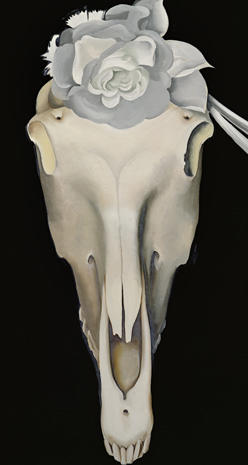Ajibola Martins
11/19/17
Modernism/ Post-Modernism
Modernism is defined as a “philosophical movement that arose from wide-scale and far-reaching transformation, along with cultural trends and changes, in Western society during the late 19th and early 20th centuries”. Many artists during modernism believed that every story that could be possibly told, in one way or the other, had already been said. In other to develop something new, they often used new form or writings, changed the way they used colors, lines and shapes in their artwork, through experiments and innovations. Many artist during this period produced varieties of Avant-garde styles in their artworks. Artist were mainly focused on making art in a “new” form to help create a “new” way of seeing things. In other words, modernism is seen as basically a more advanced period for artists. Modernism movements has also driven social and political lineups. After modernism, followed the period and movements of ‘isms’. “Impressionism, postimpressionism, fauvism, cubism, constructivism, dada-ism, surrealism, expressionism, abstract expressionism, etc”(Guerrilla Girls, 59). My favorite ‘ism’ periods: cubism and surrealism. One can say that the modernism movement sparked up the start of the ‘ism’ movements.
Men were known to always dominate over women. The only role of a woman was to maintain and take good care of the home. Women artist have never really been appreciated for their artworks. Regardless of how good of an artist they were, they were never known. However, the modernism movement sort of created this idea of a ‘new woman’. It started to have woman who was independent, educated, and oriented toward a life they wanted to live, rather than the one chosen for them. Countless of women became successful artist during modernism. Many women artist helped influence the growth of modernism, with the use of different art techniques.
| Sonia Delaunay, "Rythme Colore"(Coloured Rhythm), 1946. |
| Sonia Delaunay and two friends in Robert Delaunay's studio, Rus Des Grandes-Auguatins, Paris, 1924. |
One of the woman artist is Sonia Delaunay. She was a French artist who founded the art movement, Orphism, along with her husband, Robert Delaunay. The art movement, Orphism, was a development from Cubism and Fauvism. Sonia incorporated the use of vivid colors, geometric shapes in her artworks. She often used furniture, fabrics, and wallpapers in some of her artwork(Chadwick, 260), which became a part of the modernist movement.
Postmodernism is defined as the “movement that developed in the mid to late 20th century, across philosophy, the arts, architecture and criticism, which marked a departure from modernism”. While modernism was based on reason, postmodernism was “born of scepticism and suspicion of reason”(Tate). Postmodernism focused more on individualism, and interpretation of one’s experience rather than “abstract principles”(Tate).
| Frida Kahlo: Self Portrait, The Broken Column, 1944 |
 |
| Georgia, O'Keeffe, "Horse Skull with White Rose", 1931 |
| Georgia O'Keeffe, Ram's Head White Hollyhock and Little Hills, 1935. |
Frida Kahlo and Georgia O'keeffe one of many successful female artist during the post impressionist movement. As shown in Frida painting, she uses the her condition as a reference in majority of her paintings. Due to the weakness in her spine, she was almost paralyzed, and wore plaster corsets through her lifetime. Georgia created artworks based on the journeys she went on and experiences with nature. As it was mentioned in the previous paragraph, Postmodernism art focuses on individual rather than what people tell. Both Frida and Georgia make artwork based on what they have faced, and encountered during their lifetime.
Work Cited:
Chadwick, Whiney. Women, Art, and Society. Thames and Hudson 2007.
The Guerrilla Girls' Beside Companion to the History of Western Art. Penguin Books, 2006.
http://www.tate.org.uk/art/art-terms/p/postmodernism.
http://www.tate.org.uk/art/art-terms/m/modernism.
No comments:
Post a Comment
Note: Only a member of this blog may post a comment.